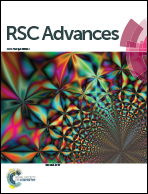Naturally occurring Batatasins and their derivatives as α-glucosidase inhibitors
Abstract
Batatasins are endogenous plant hormones found in yams and other related plant species. These plants are widely consumed as botanical dietary supplements in many parts of the world. This study investigated the inhibitory effects and mechanisms of Batatasin I, III, IV, V against α-glucosidase regarding their antidiabetic activities. The results revealed that Batatasin I, III, IV inhibited α-glucosidase in a reversible and noncompetitive manner, with IC50 values of 2.55, 1.89 and 2.52 mM respectively, while Batatasin V completely abolished its inhibitory activity even at the highest concentrations tested. Furthermore, a class of Batatasin-derived compounds with different substitution patterns was synthesized and subjected to the assay to clarify the structure–activity relationships, which suggested that the hydroxyl at the C-2′ position may play a significant role in improving the inhibitory activities. Their probable binding modes and the specificity of the binding sites were studied using molecule docking simulation. It was concluded that Batatasins, especially Batatasin III and IV, are promising α-glucosidase inhibitors, which therefore could be used as functional food to alleviate postprandial hyperglycemia and as potential candidates for the development of antidiabetic agents.


 Please wait while we load your content...
Please wait while we load your content...